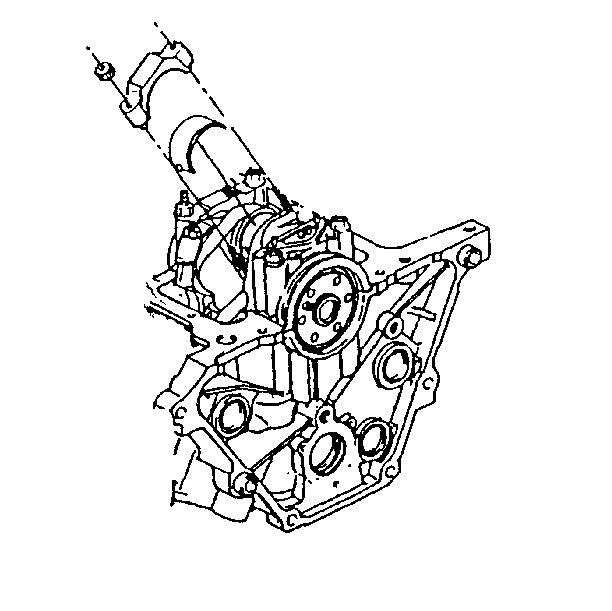Removal Procedure
- Remove the crankshaft oil deflector.
- Remove the connecting rod cap nuts.
- Remove the connecting rod caps and the rod bearings. Wipe any oil from the bearings.
- Inspect the connecting rod bearings. Refer to Main Bearing and Rod Bearing Selection .
- Measure the amount of bearing clearance. Refer to Main Bearing and Rod Bearing Selection .

Important: Keep the bearings with the original connecting rod and cap in order to ensure correct reassembly.
Installation Procedure
- Dip the bearing cap bolts in clean engine oil.
- Lubricate the bearing surface with an Engine Oil Supplement (E.O.S.) GM P/N 1052367, or equivalent.
- Install the connecting rod.
- Install the bearing cap. Do this by gently tapping the bearing cap into place with a brass or leather mallet.
- Inspect the connecting rods for binding. Do this by prying the connecting rods back and forth. Loosen and retighten the bearing cap if necessary.
- Measure the amount of connecting rod side clearance.
- Install the crankshaft oil deflector. Refer to Crankshaft Oil Deflector Replacement .
Notice: Do not scrape, shim, or file bearing inserts. If the bearing surface of the insert is touched with bare fingers, the skin oil and acids will etch the bearing surface.
Important: Clean and dry the bearing cap bolt holes and the cap mating surfaces.
Notice: Use connecting rod stud protectors or guide pins in order to avoid damage to the crankshaft journal.

Notice: In order to prevent the possibility of cylinder block or crankshaft bearing cap damage, the crankshaft bearing caps are tapped into the cylinder block cavity using a brass, lead, or a leather mallet before the attaching bolts are installed. Do not use attaching bolts to pull the crankshaft bearing caps into the seats. Failure to use this process may damage a cylinder block or a bearing cap.
Tighten
Tighten the connecting rod nuts to 20 N·m (15 lb ft)
+ 75°.
Notice: Use the correct fastener in the correct location. Replacement fasteners must be the correct part number for that application. Fasteners requiring replacement or fasteners requiring the use of thread locking compound or sealant are identified in the service procedure. Do not use paints, lubricants, or corrosion inhibitors on fasteners or fastener joint surfaces unless specified. These coatings affect fastener torque and joint clamping force and may damage the fastener. Use the correct tightening sequence and specifications when installing fasteners in order to avoid damage to parts and systems.
